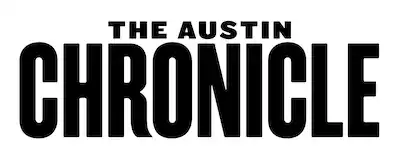https://www.austinchronicle.com/columns/1995-12-01/530173/
Page Two
By Louis Black, December 1, 1995, Columns
In Wimberley, about 45 minutes west of here, there's a little tourist spot called Pioneer Town. It attempts, in a somewhat crude and commercial way, to recreate the boomtown feel of the Old West. Clapboard buildings with wooden sidewalks on a grid pattern head out to nowhere in the wind's four directions. The "center" of town is not immediately obvious -- but most visitors begin their trek at the arcade which happens to be next to the enormous parking lot. In a sense, Pioneer Town, though perhaps only a quarter square mile, is a microcosm of the beginning of most Texas cities -- small towns built on pioneer spirit, then consumed by an insatiable hunger for land, and the expedient exploitation of natural resources. In their rush to accommodate growth, many lost their city centers and -- in essence -- their reason for being.
Austin was supposed to be different. Based on its status as the state's capital, our city was originally conceived as the "seat of Empire," and as such, its beginnings were auspicious, and well-planned to sustain its grand character. But it only took 10 years for those early residents to spill out beyond the prescribed borders -- the pressure of commercial interests and the temptation of open land began to overwhelm any attempt at rational growth and historical preservation. The horizon was limitless.
Over one hundred years later, Austin is not just a city, it's a big city, with all the attendant statistics on traffic congestion, city service demands, crime, suburban growth, and high cost of living. With so much growth inside and outside the city limits, and the resultant negative effect on our natural resources, city planning is an imperative for sustaining Austin as a livable city. This week in the politics section, we present the first of several installments on planning in Austin -- a look at how we got here as a city, what efforts can be made to accommodate growth while sustaining our history and natural resources, and a comparison of our predicament and our solutions with those of other U.S. cities.
For Austin, the real estate boom of the early 1980s, or the "Age of the Cranes," began the city's metamorphosis into what we see today, and put us in danger of losing our city center. A full view of the Capitol is only possible downtown if you dodge traffic to stand in the middle of Congress Avenue. High-rise office buildings replaced most of the 19th-century brownstones, and displaced most of the retail and entertainment that once drew bustling crowds on evenings and weekends. On the outskirts, Austin reacted to the population boom as most other cities would -- suburbia flourished and sprawled, with its malls and commercial strips servicing artificial communities while freshly widened arterials paved the way for the new commuters.
The bust that quickly followed should have been a wake-up call and an opportunity for city planners. The respite from intense suburban home and highway building lasted from the mid-Eighties to around 1991, and in that time, the lessons from the boom time were wasted and forgotten. Now, here we are, in the early years of another breathless economic windfall, experiencing the same suburban blooms, and the same dangers to our natural resources, while the conversations down at city hall center around our need for "zero congestion," as if feeding the beast will decrease its size.
Oddly enough, Austin has a "master plan" for growth, transportation, public buildings, and parks -- in fact, we have several. Mike Clark-Madison's story on page 16 gives an overview of these myriad plans and why city planners eventually gave up on them. Economic pressure is certainly one reason: Austin tends to grow in quick spurts during boom periods. We're in one right now -- how is one to control that? The most important reason, however, is the lack of process and implementation of the master plans -- which is why there is no method for reasonable control. City leaders have been willing to back even the most "visionary" of plans -- neighborhood input on development, small community parks, more public space downtown, light rail, and on and on. But they balk at giving the community the tools to make the vision a reality. Witness the latest recommendations for a master plan presented to the Austin City Council by the Citizens Planning Committee. Last year, a dedicated group of over 20 volunteers put together what the council unanimously agreed was a reasonable plan for this city. Yet no one on the dais was willing to adopt it as policy -- the document is now gathering dust on the shelves of perhaps one or two city planners and a few of their clerks.
The vision for what this city is and should be has become disparate and political. Without the tools to know where we are going and how to get there, we'll be hurled down the road toward a Houston, Dallas, or San Jose of our own making, choking from traffic fumes on the way to suburban mediocrity. It is entirely possible that it is too late; but it is truer to say that we can determine our own future, one that is designed to serve the entire community within, and without.
Over the next several weeks, we will run articles on the city land code revisions already underway, the process of central city in-fill, comparisons with some of the best -- and worst -- city plans around the country, transportation issues, and the recommendations of a local group for a sustainable Austin. This week, we start with an article by our neighborhood reporter, Mike Clark-Madison, on Austin's history of city planning.
Copyright © 2025 Austin Chronicle Corporation. All rights reserved.
